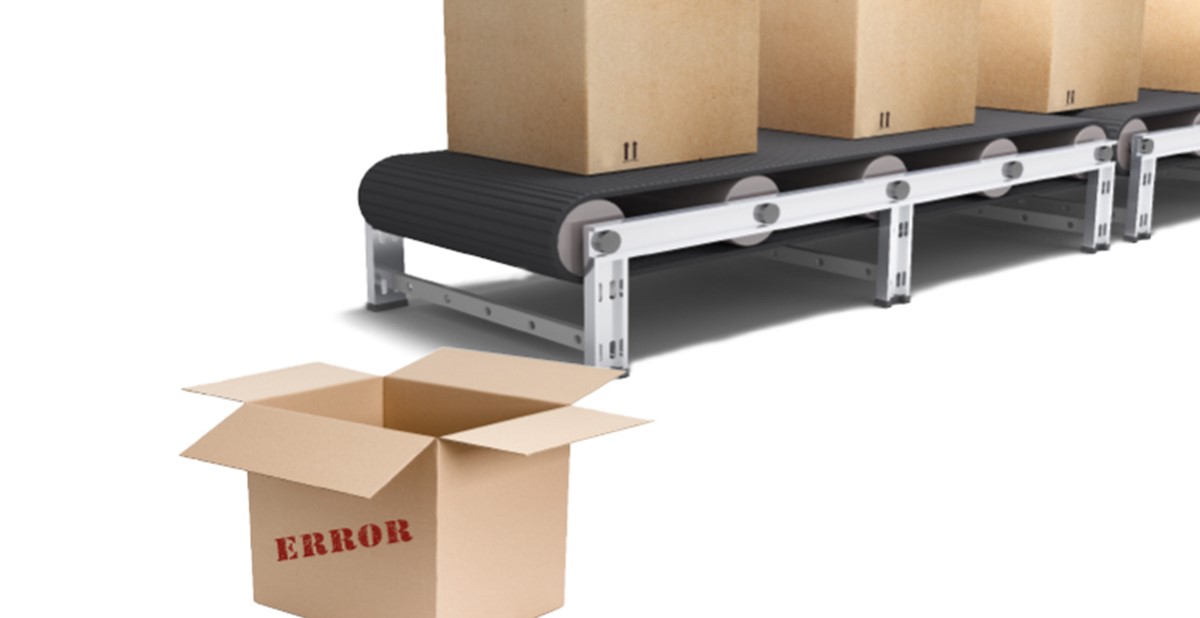Question: An Order Went Wrong— Am I To Blame?

A DISTRIBUTOR ASKS: I recently worked with a vendor who placed my client’s logo in the wrong location on a large quantity of bags. The products had been shipped from the supplier to this vendor for printing and the vendor has admitted to their mistake. They are not charging us for their time or printing but the client can’t use the bags and we are on the hook for the cost of the bag. Who is responsible for this loss? How should I proceed?
–––––––––––––––––––––––––––––––––––––––––––––––
To me, the vendor printed the items incorrectly and should be on the hook for the bags. Have you asked them already? Because if they are worth anything they will take responsibility for their screwup, like they should. To me, it’s a no-brainer. If they messed up and there was a proof, it’s 100 percent their responsibility to pay for it.
David Addi
Fired Up Promotions
Baltimore, Maryland
–––––––––––––––––––––––––––––––––––––––––––––––
My thought would be that your screen printer, who already admitted the error, should also be responsible for the bags. My sense would be that they probably wouldn’t admit their fault. Send them an invoice along with their note saying they screwed up. Will they pay? Probably not. I’m not sure about where you live, but I’m sure you have a small claims court where you can have ‘loads of fun.’ That’s what I’d do.
Allan Clair
A&A Specialty Advertising
Fort Myers, Florida
–––––––––––––––––––––––––––––––––––––––––––––––
What does your contract—or terms and conditions—with the decorator say? It is typical to include something like, ‘decorator will be responsible for mid-decorated goods over XX percent per order, with a maximum value of $XX per piece.’ With that agreement in place, the decorator is responsible for securing replacement bags, up to the max value per piece, and re-running the job. You may need to buy more to cover their XX percent error allowance.
Jennifer Reissaus, MAS
Advertising Specialties Alliance/ Kaeser & Blair
Cranberry Township, Pennsylvania
–––––––––––––––––––––––––––––––––––––––––––––––
Some decorator suppliers will look to negotiate their way out of the total cost and offer to zero out their own charges, not considering the cost of goods. You’ll need to supply them with validated charges for the goods and request payment, but you may not see the results you’re hoping for. In that case, and depending on the size of the order, a lawyer may have to get involved. Was there no proof approval process on this order?
Lisa Greyhill
Grey Hill & Associates
Clarendon Hills, Illinois
–––––––––––––––––––––––––––––––––––––––––––––––
Many times, a company decorating a supplier’s pieces will have a waiver in the fine print, saying the customer accepts responsibility if something goes wrong. The decorator limits their liability to the cost of their part of the work.
Amy Kritzman
Gold Medal Ideas
Buffalo Grove, Illinois
–––––––––––––––––––––––––––––––––––––––––––––––
If the proof approved by you and your customers shows the artwork in the correct placement, the vendor is 100 percent responsible. Ask for the vice president of sales or president of the company if customer service is having a hard time. If this was a larger order, I always recommend getting a pre-production sample.
Dave LaRusso
DVL Enterprises, Inc./MPGTandem
Fenton, Missouri
–––––––––––––––––––––––––––––––––––––––––––––––
Where did you get the bags? From the client? If they came from the client, this is exactly why I don’t print on someone else’s property in case of a screwup. If they came from one of your vendors, why didn’t they print them? Just curious.
In this case, it is the printer that screwed up after you approved the proof. He needs to replace them and reprint them correctly.
Judith S. Peacock
JHT Associates, Inc.
Oxford, Maine
–––––––––––––––––––––––––––––––––––––––––––––––
Do you have clear documentation on your request for placement? Do you have, in writing, their admission of their error? What is their policy on the decoration of ‘brought-in goods?’ If you have both of these things and their policy is that they do replace damaged or incorrectly decorated goods, then, yes, they should be responsible for the bags and the re-run of the job. However, this doesn’t mean they will. I would push you to get reimbursed, but in the meantime, satisfy the client, get more bags and re-run the job with a real, reputable decorator. I make that statement only if your current decorator doesn’t step up.
Lesson to everyone: know your decorator’s policies, get them in writing, interview the decorators before you send an order and, remember, you’re only as good as the weakest link in your supply chain, and you are relinquishing your good name and reputation into the hands of someone else.
Cliff Quicksell, MAS+
Cliff Quicksell Associates/iPROMOTEu
Walkersville, Maryland
–––––––––––––––––––––––––––––––––––––––––––––––
If your decorator had specific instructions—for example, ‘top of logo must be three inches from this seam and left shoulder of logo must be four inches from this seam’—then you did your job. Or if you had received a pre-production photo with XX in the correct position, I don’t know. Then, you get to the money part. If it’s worth $1,000, then maybe let it go, replace the bags and have the decorator do the work for zero. The key here is getting your customer back to ground zero with great product, done correctly. Sounds like a phone call is in need to negotiate. Everyone makes mistakes.
Pat Moller
MadeToOrder
Santa Clarita, California
–––––––––––––––––––––––––––––––––––––––––––––––
There are several issues here:
- Is the client reasonable in rejecting the bags? Is there such a big difference in positions? I would first negotiate with the client and give them the product at the cost of blanks, plus a small percentage, since the logo printer is not charging you.
- If there was a written approval with positioning shown that has been submitted to the printer, then the printer is ultimately responsible.
- If No. 2 is true and the error in positioning is significant, then I would talk to the printer about you being reimbursed.
- If the printer disagrees, you should ask yourself the importance of this relationship.
- If the printer says, “no,” and you have other alternatives, then kiss the printer goodbye. You can sue in small claims court.
- If that is your only choice of printers and you want to keep the relationship, you might have to bite the bullet.
- At the minimum, I would get the printer to go 50/50 on the cost of the bags, if you cannot get 100 percent reimbursement.
Disclaimer: this is not legal advice. For legal advice, check with a licensed authority in your state. I am not licensed in your state.
Zigmund Sepanski, J.D.
Funincentives
Rancho Santa Margarita, California
–––––––––––––––––––––––––––––––––––––––––––––––

A Distributor Asks: I’m new to the promotional products industry, and I recently had a client who had a definite idea about a product to customize for a campaign. Using my expertise, I truly believe that use of a different product and strategy would be more effective, but I’m finding it difficult to communicate this to the client, who appears set in his ways. Can you share with me an example of a similar encounter, and how you went about handling the situation to set up the client for success?
What’s Your Answer? Email answers with your name, title and company name by July 20 to Question@ppai.org for possible inclusion in an upcoming issue of PPB magazine.
–––––––––––––––––––––––––––––––––––––––––––––––
Danielle Renda is associate editor of PPB.

